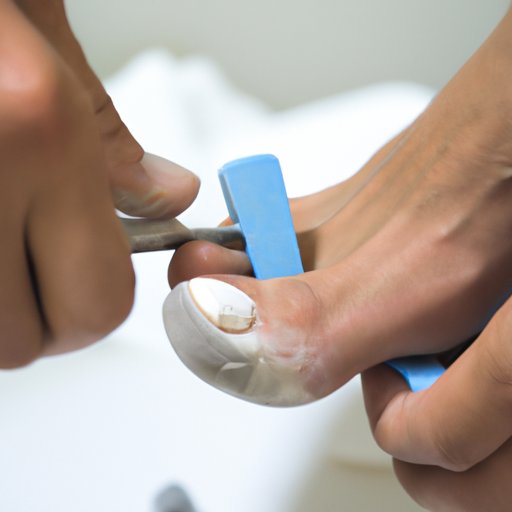Introduction
Many people have heard of hammertoe, a common condition that affects the toes and can cause pain and discomfort. It is estimated that up to 20% of the population may experience this condition at some point in their lives, with women being more commonly affected than men. While it can be tempting to ignore mild cases of hammertoe, seeking treatment is important to avoid the condition worsening and causing further problems down the line.
Overview of Hammertoe
Hammertoe is a condition where the toes become deformed, with the middle joint of the affected toe bending upward while the end of the toe points downward. This deformity can be caused by a variety of factors, including a genetic predisposition to the condition, wearing tight or poorly fitting footwear, and injuries to the foot. While the condition can be mild in some cases, for others it can cause pain and discomfort, as well as making it difficult to wear certain types of footwear.
Thankfully, there are a range of treatment options available for those suffering from hammertoe. These include both surgical and non-surgical approaches, and the best option for each individual will depend on a variety of factors.
Non-Surgical Options
In mild cases of hammertoe, or for those who wish to try non-invasive treatments before considering surgery, there are a number of options available. These include exercises and stretches for the foot, as well as tips for footwear and the management of pain and inflammation.
One of the most effective things that can be done in the management of hammertoe is regular exercise and stretching. This can help to improve the flexibility of the toes and decrease pain and discomfort. One simple exercise involves using the hands to gently pull the affected toe upward and hold for several seconds, before releasing and repeating the process. Another involves using a towel to gently stretch the toes outwards, increasing the range of motion of the joint.
Footwear is also a key consideration when managing hammertoe. Choosing shoes with a wide toe box, low heels, and good arch support can help to alleviate pain and prevent the condition from worsening. In addition, orthotic inserts or pads can be used to provide extra support and cushioning to the affected area.
For those experiencing pain and inflammation, there are a number of self-management techniques that can be employed. Applying ice to the affected area can help to reduce swelling, as can taking over-the-counter anti-inflammatory medications such as ibuprofen.
Treatment Options Comparison
While non-surgical options can be effective in managing the symptoms of hammertoe, in more severe cases surgery may be required to correct the deformity. There are a number of surgical options available, with the most common being arthroplasty, which involves removing part of the affected joint, and arthrodesis, which involves fusing the joint together.
When considering which treatment option is best for them, patients will need to take into account a range of factors, including the severity of their condition, their overall health and medical history, and their personal preferences. While surgical options are generally more effective at correcting the deformity, they do carry risks such as infection, nerve damage, and scarring. Non-surgical options are generally less risky, but may not be as effective in severe cases.
Lifestyle Changes and Prevention
While it is not always possible to prevent hammertoe from developing, there are a range of steps that can be taken to reduce the risk of developing this condition. Key among these is choosing the right footwear, with shoes that fit properly, have a wide toe box and good arch support, and a low heel being the best options. Avoiding high heels is also important, as these can put undue pressure on the toes.
Regular exercise and stretching can also help to maintain the health of the feet, as can maintaining a healthy weight and wearing appropriate footwear during exercise or physical activity. If an injury is sustained to the foot, seeking prompt medical attention and following any recommended treatment plans is also essential in preventing long-term foot problems from developing.
Recovery
For those undergoing surgery to correct hammertoe, there will be a period of recovery required after the procedure. During this time, patients may need to wear a cast or brace to immobilize the affected area, and may need to take pain medication or anti-inflammatory drugs to manage pain and swelling. It is also important to keep the feet elevated as much as possible to reduce swelling and promote healing. In addition, patients will need to attend follow-up appointments with their healthcare provider to monitor progress and ensure that the recovery process is on track.
Conclusion
In conclusion, while hammertoe can be a painful and debilitating condition, there are a range of treatment options available to help manage the symptoms and correct the deformity. Whether opting for non-surgical approaches such as exercises and footwear changes, or more invasive surgical options, seeking prompt treatment is key to avoiding long-term foot problems. By taking steps to maintain healthy feet and preventing the condition from developing in the first place, it is possible to achieve long-lasting relief from the discomfort and pain of hammertoe.
